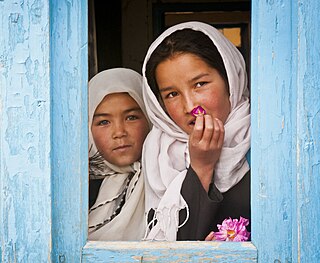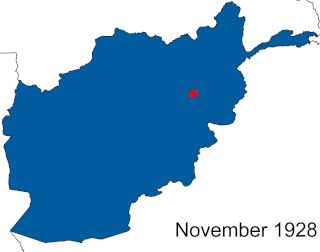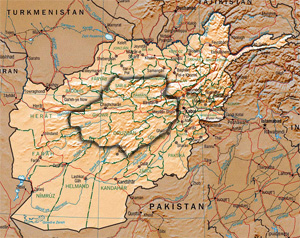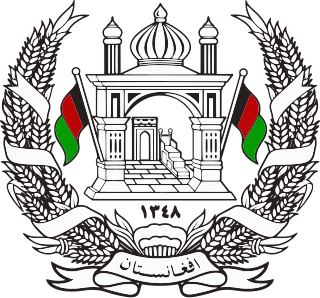Third uprising

The third uprising of Hazara was in response to excessive taxation, [14] [15] starting in early 1893. This revolt took the government forces by surprise and the Hazara managed to take most of Hazarajat back. During the revolt the Hazaras arrested or killed the governor of Gizu; [16] the governor of Uruzgan tried to plead to the Hazaras that the Amir would listen to their demands. [16] The provincial forces responded to the revolt with military force; in this response the Hakim of Gizu reported to the governor general of Balochistan that General Mir Atta Khan at Gizu committed "great excesses" in Gizu. [17] Hazaras also managed to commit great success in the First Battle Of Uruzgan, where Hazara forces managed to defeat 2 waves of Afghan attacks in Uruzgan [18]
After the revolt unfolded; Hazara tribal leaders like Muhammad, Karbala-i-Raza and others were arrested after trying to flee. [19] Abdur Rahman kept various Hazara chiefs as hostages in Kabul; yet eventually sent them back to Uruzgan; [20] after the revolt was crushed they were then sent back to Kabul again. [21] After months of fighting, the uprising Hazaras were eventually defeated due to a shortage of food; in response to such food shortages Abdur Rahman ordered grain be sent from Herat to Uruzgan. [22] Small pockets of resistance continued to the end of the year as government troops committed atrocities against civilians and deported entire villages. [12] The governor of Balochistan reported to the foreign department of India that he believed Abdur Rahman was intending to exterminate the Hazaras. [23] Massive forced displacements, especially in Oruzgan and Daychopan, continued as lands were confiscated and populations were expelled or fled. Out of 132,000 families, 10,000 to 15,000 Hazara families fled the country to northern Afghanistan, Mashhad (Iran), and Quetta (Pakistan), and 7,000 to 10,000 Hazaras submitted to Abdur Rahman, and the rest fought until they were defeated. [2] [8] However according to other sources the number of Hazara families displaced alone were much higher than these figures at 400,000 with 80% of those being displaced having been killed or enslaved. [1] There is a famous story of 40 Hazara girls in Uruzgan committing suicide to escape sex slavery during the persecution. [24] 9,000 Hazara women were enslaved in Kabul alone. [4] 30 mule loads; [25] or roughly over 400 decapitated Hazara heads [N 2] were allegedly sent to Kabul. The Sultan Ahmad Hazara tribe of Uruzgan was in particular severely persecuted. [2] The Beshud Hazara tribe too faced the brunt of Amir's crackdown in particular as well. [2]
It is estimated that more than sixty percent [28] of the Hazara population were massacred and some displaced and exiled during Abdur Rahman's campaign against them. Hazara farmers were often forced to give up their property to Pashtuns and as a result, many Hazara families had to leave seasonally to the major cities in Afghanistan, Iran, or Pakistan to find jobs and a source of income. Quetta in Pakistan is home to the third largest settlements of Hazara outside Afghanistan. Sayed Askar Mousavi, estimates that more than half of the entire population of Hazarajat was driven out of their villages, [8] including many who were massacred. Encyclopædia Iranica claims: "It is difficult to verify such an estimate, but the memory of the conquest of the Hazārajāt by ʿAbd-al-Raḥmān Khan certainly remains vivid among the Hazāras themselves, and has heavily influenced their relations with the Afghan state throughout the 20th century." [8] In 1894 802 Hazara leaders who survived the rebellion were killed or exiled after being captured. [2]
Others claim that Hazaras began leaving their hometown of Hazarajat due to poverty and in search of employment mostly in the 20th century. [29] Most of these Hazaras immigrated to neighboring Balochistan, where they were provided permanent settlement by the government of British India. [30] Others settled in and around Mashad, in the Khorasan Province of Iran. [29]















